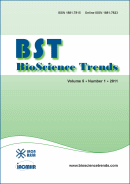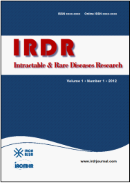Drug Discov Ther. 2015;9(1):33-37. (DOI: 10.5582/ddt.2015.01000)
Antibiotic-producing bacteria from stag beetle mycangia.
Miyashita A, Hirai Y, Sekimizu K, Kaito C
The search for new antibiotics or antifungal agents is crucial for the chemotherapies of infectious diseases. The limited resource of soil bacteria makes it difficult to discover such new drug candidate. We, therefore, focused on another bacterial resource than soil bacteria, the microbial flora of insect species. In the present study, we isolated 40 strains of bacteria and fungi from the mycangia of three species of stag beetle, Dorcus hopei binodulosus, Dorcus rectus, and Dorcus titanus pilifer. We identified those species with their ribosomal DNA sequences, and revealed that Klebsiella spp. are the most frequent symbiont in the stag beetle mycangia. We examined whether these microorganisms produce antibiotics against a Gramnegative bacterium, Escherichia coli, a Gram-positive bacterium, Staphylococcus aureus, or a fungus, Cryptococcus neoformans. Culture supernatants from 33, 29, or 18 strains showed antimicrobial activity against E. coli, S. aureus, or C. neoformans, respectively. These findings suggest that bacteria present in the mycangia of stag beetles are useful resources for screening novel antibiotics.







